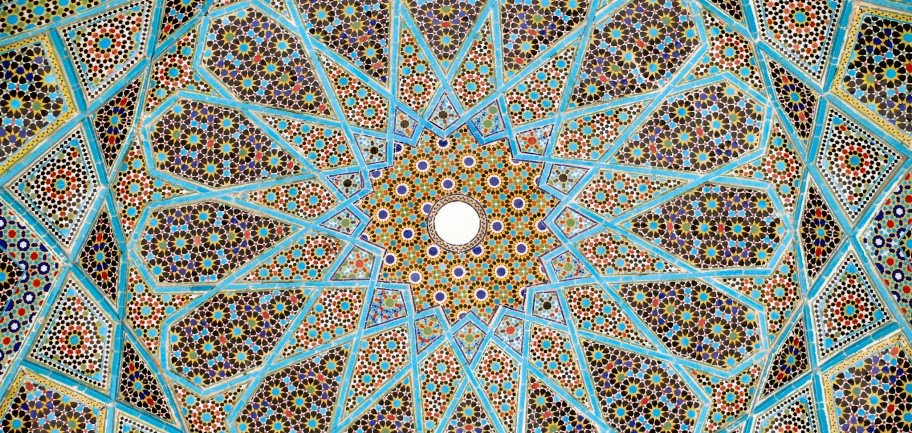
Now that I have finally finished a very busy semester, I can start blogging again! Don't worry-- I haven't stopped immersing myself in all things Persian :) As a final project for a class about Shi'ism, I recently wrote a paper about popular devotional art from Iran and Iraq. I came into this class with a basic knowledge about Shi'ism but as I began collecting images of religious posters, banners, and internet imagery I started to understand the significant emotional dimensions of Shi'ism and how visualization stands at the very core of it. Contrary to popular belief that Muslims don't "like" figural imagery, Shi'ism has always embraced it and has popularized it to such an extent that it has become its own visual vocabulary. Every Shi'ite knows the iconic face of Imam Hussein-- his determined expression and piercing eyes in portraiture or his arrow-riddled body in combat-illustration. He was the hero-martyr in what was the most defining moment in Shi'ism-- the Battle of Karbala in the deserts of Iraq where the Prophet Muhammad's descendants were brutally murdered by the army of Yazid or taken captive. The Day of Ashura commemorates this event and people often carry posters of Hussein, Imam Ali (the cousin of the Prophet), or the 12 Imams in processions. South Asia has also had a rich tradition of Shi'ite devotional art-- depicting Hussein's horse Zoljaneh and the hand of Fatima (the daughter of the Prophet). Posters like these are very instrumental as they help create a collective memory and identity for Shi'ites as well as capture the idealized personas of the Holy family to inspire emulation among devotees. I know I was totally captivated!

An old painting of the Battle of Karbala from Qajar Iran
(left) Portrait of Imam Ali and his sword, (middle) Imam Hussein, Abbas, Zayneb and Ali Asghar the martyred infant, (right) Imam Hussein
Two posters of Imam Hussein in the Battle of Karbala
Imam Hussein, Imam Ali, and Abbas with the 12 Imams below including the Mahdi (the Imam in occultation) at the far left with a ray of light as his face--yet to be seen.
Two posters of Zoljaneh (Imam Hussein's white stallion), another illustration of the 12 Imams, and a photo of boys in Iraq holding a poster with Hussein and Ali
(clockwise) poster of Imam Ali in Iraq, a poster from India of a young boy and girl reading the Quran, the Battle of Karbala--its martyrs are depicted as roses, and Buraq (the Prophet Muhammad's holy steed that flies to heaven)
A collage of Imam Ali portraits from the Internet
Islamic talisman from South Asia with the names of Ali, Fatima, Hassan, and Hussein in the stars.The hand in the middle has the names of the 12 Imams written in its palm.
